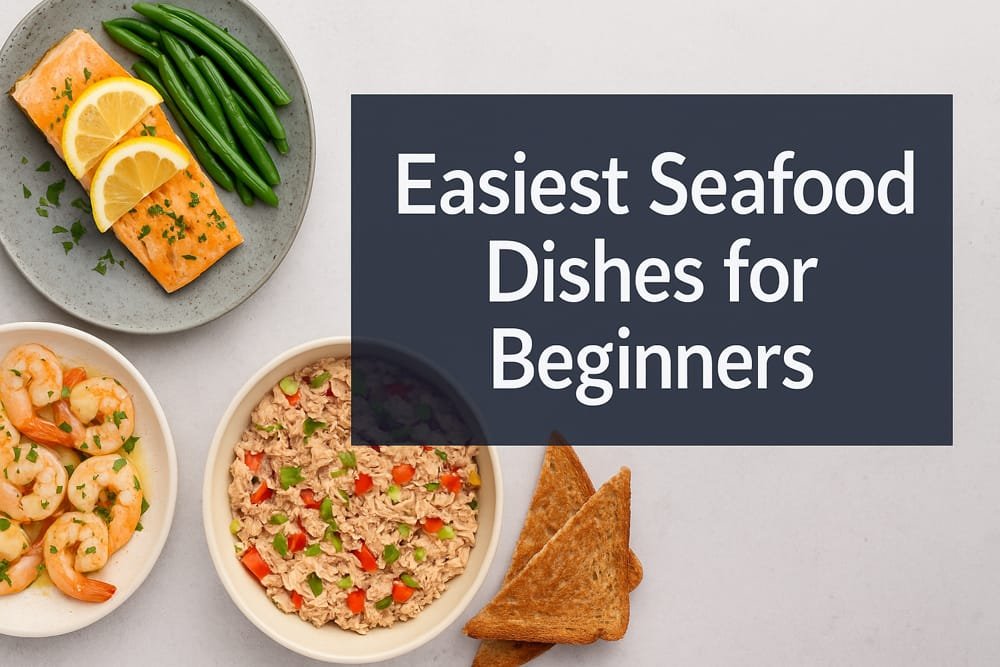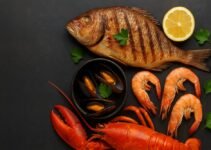Cooking seafood at home is one of the fastest ways to prepare nutritious and flavorful meals without complex culinary skills. Seafood offers significant health benefits, including high-quality protein, omega-3 fatty acids, and essential vitamins like B12 and D. For beginners, starting with seafood means less time in the kitchen and more consistent cooking results due to its quick preparation and simple seasoning requirements.
This guide provides direct answers to the most common beginner questions: Which seafood dishes are the easiest to cook? What ingredients and techniques guarantee success? And how can you avoid the typical mistakes that lead to overcooked or flavorless meals? Whether you’re preparing a quick weeknight dinner or testing your skills for the first time, this article will help you build confidence and serve impressive seafood dishes with minimal effort.
Contents
- 1 What Are the Key Factors That Make a Seafood Dish Easy to Prepare?
- 2 Which Seafood Types Are Best for Beginner Cooks?
- 3 What Are the Easiest Seafood Recipes for Quick Weeknight Dinners?
- 4 Which Cooking Techniques Are Easiest for Preparing Seafood?
- 5 What Common Mistakes Should Beginners Avoid When Cooking Seafood?
- 6 Where Can Beginners Buy Fresh and Easy-to-Cook Seafood?
- 7 How Can Beginners Build Confidence When Cooking Seafood?
What Are the Key Factors That Make a Seafood Dish Easy to Prepare?
Three critical factors determine the simplicity of a seafood dish: cooking method, seafood type, and ingredient accessibility.
- Cooking Method: Simple methods like baking, steaming, and pan-searing reduce preparation time and minimize the chance of cooking errors. These methods require fewer steps and less equipment than techniques like grilling or deep-frying.
- Seafood Type: Soft-textured seafood like shrimp, salmon, and canned tuna cooks quickly and is highly forgiving for new cooks. These types do not require advanced preparation techniques such as deboning or intricate seasoning.
- Ingredient Accessibility: Using common pantry items such as olive oil, garlic, lemon, and dried herbs makes seafood recipes easier. Dishes relying on exotic spices or specialty sauces increase complexity and the risk of flavor imbalance.
Which Seafood Types Are Best for Beginner Cooks?
There are 5 seafood options ideal for beginners: shrimp, salmon, canned tuna, tilapia, and pre-cooked crab meat.
- Shrimp: Shrimp cooks in under 5 minutes and works well with basic seasoning like garlic butter or lemon pepper. It is also easy to clean and devein with minimal effort.
- Salmon: Salmon fillets require simple seasoning and are highly forgiving when baked or pan-seared. A standard 6-ounce fillet reaches perfect doneness in 12–15 minutes.
- Canned Tuna: Canned tuna eliminates cooking entirely. It is ideal for salads and sandwiches, requiring only seasoning and mixing.
- Tilapia: This white fish has a mild flavor and cooks evenly. A fillet of tilapia bakes perfectly at 375°F (190°C) in just 10 minutes.
- Pre-Cooked Crab Meat: This option saves time and removes the hassle of shell cracking. It is ready to serve cold in salads or quickly heated for crab cakes.
What Are the Easiest Seafood Recipes for Quick Weeknight Dinners?
Three seafood recipes consistently deliver fast, easy, and flavorful results for beginners: garlic butter shrimp, baked lemon herb salmon, and tuna salad.
- Garlic Butter Shrimp: Sauté cleaned shrimp in melted butter and minced garlic for 4–5 minutes. Add a squeeze of lemon before serving. This dish pairs well with steamed rice or pasta.
- Baked Lemon Herb Salmon: Place salmon fillets on a baking tray, season with olive oil, salt, pepper, and fresh lemon slices. Bake at 375°F (190°C) for 12–15 minutes. Serve with roasted vegetables for a balanced meal.
- Tuna Salad: Mix canned tuna with mayonnaise, diced celery, and a pinch of black pepper. This no-cook recipe is ideal for sandwiches or as a protein-rich salad topping.
Which Cooking Techniques Are Easiest for Preparing Seafood?
Baking, steaming, and air frying are the three easiest cooking techniques for beginners preparing seafood.
- Baking: Baking provides consistent results with minimal supervision. Simply season the seafood, place it on a lined baking sheet, and cook at 375°F (190°C). For example, salmon and tilapia fillets reach optimal doneness within 12–15 minutes.
- Steaming: Steaming preserves the natural flavors and nutrients of seafood. To steam shrimp or white fish, place them over boiling water for 5–7 minutes. This method requires no oil, making it ideal for healthy meals.
- Air Frying: Air fryers offer a mess-free way to achieve crispy textures without deep-frying. Set the air fryer to 400°F (204°C) and cook shrimp or fish fillets for 8–10 minutes. This technique also reduces the need for excess oils.
What Common Mistakes Should Beginners Avoid When Cooking Seafood?
Beginners often make five critical mistakes: overcooking, improper thawing, using overpowering seasonings, skipping the drying process, and starting with difficult seafood types.
- Overcooking: Seafood becomes tough and rubbery when overcooked. Use a thermometer to ensure the internal temperature reaches 145°F (63°C) for fish and 120°F (49°C) for shrimp.
- Improper Thawing: Thawing seafood at room temperature promotes bacterial growth. Always thaw it overnight in the refrigerator or use cold water for a faster method.
- Overpowering Seasonings: Strong spices can mask the delicate flavor of seafood. Use light seasoning such as salt, pepper, lemon juice, and herbs to enhance rather than dominate the taste.
- Skipping the Drying Process: Moisture on seafood prevents proper searing and leads to soggy textures. Pat seafood dry with paper towels before cooking.
- Choosing Complex Seafood Types: Avoid starting with shellfish like lobster or mussels that require advanced techniques. Stick to simple proteins like shrimp and salmon until you build confidence.
Where Can Beginners Buy Fresh and Easy-to-Cook Seafood?
Supermarkets, local fish markets, and online seafood suppliers are the three best sources for beginners to purchase easy-to-cook seafood.
- Supermarkets: Large grocery chains often stock pre-packaged fillets and frozen seafood options that are portioned and ready to cook. These products reduce preparation time and simplify portion control.
- Local Fish Markets: Fish markets offer fresher seafood options and the ability to ask sellers for beginner-friendly recommendations. Look for clear eyes, firm flesh, and a fresh, ocean-like smell when selecting whole fish.
- Online Seafood Suppliers: Trusted online platforms provide flash-frozen seafood that retains quality and flavor. Brands like Vital Choice and Fulton Fish Market deliver portioned, ready-to-cook seafood directly to your home.
How Can Beginners Build Confidence When Cooking Seafood?
Beginners can build confidence in seafood cooking by mastering 3 key habits: starting with simple recipes, practicing consistency, and gradually exploring new techniques.
- Start with Recipes Using 5 Ingredients or Fewer: Focus on dishes that require minimal preparation and seasoning. Options like garlic butter shrimp or baked salmon with lemon deliver excellent results without overwhelming steps. This simplicity helps beginners achieve success from the first attempt.
- Practice the Same Recipe at Least 3 Times: Repeating a simple seafood recipe multiple times helps you understand cooking times, control heat accurately, and recognize the correct texture. This repetition develops essential kitchen instincts and removes the fear of failure.
- Explore One New Cooking Method at a Time: After becoming comfortable with baking and steaming, try introducing pan-searing or air frying. Avoid complicated methods like poaching or cooking whole shellfish until you’ve mastered basic preparations.
By applying these habits, beginners quickly transition from hesitant cooks to confident home chefs capable of preparing delicious seafood meals. For better results, always start with fresh and easy-to-cook seafood. Refer to our detailed guide on how to buy fresh seafood safely to ensure high-quality ingredients that enhance both flavor and cooking success.



